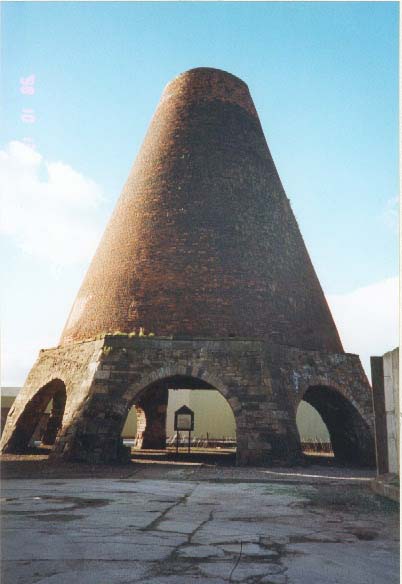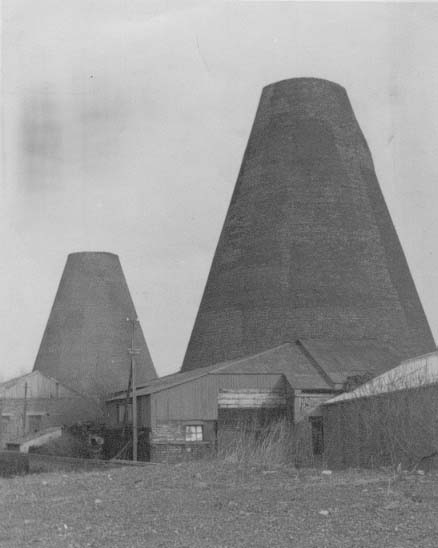Alloa Glass Works was opened around 1750 by Lady Frances Erskine on the edge of the river Forth on the southern boundary of Alloa. The site has since expanded and much of the site has been redeveloped to ensure the continued success of the plant. The works has kept one of its glass cones, dating back to around 1825. It has a conical brick structure on a stone base. The cone - named the Northern cone - is the only such structure to survive in Scotland and is one of just four in the United Kingdom. On the 10th of November 1975, the structure was given the status of a scheduled ancient monument. It is one of seventeen scheduled ancient monuments located within Clackmannanshire.

When the works was founded, workers were trained by craftsmen from Bohemia (in the present-day Czech Republic), who also oversaw the construction of the first glass cone on the site. This structure was ninety feet tall. By 1825, the Edinburgh, Glasgow and Alloa Glass Company owned the site, and they built another three glass cones, of which the Northern cone, 79 feet high, was one. (Its immediate neighbour was known as the Southern cone.) The base was octagonal, rather than circular, and had arched entrances. The main body of the cone was of brick laid in English Bond formation. The original cone and one other were demolished before the 1960s, but the Southern cone survived until 1968. At the same time, the Northern cone regained its original appearance when some later additions were removed.

Although glassmaking is an ancient process, it was carried out on a small scale until the development of industrialised methods in Europe allowed it to be mass-produced. The fusion of silica and sodium oxide in a furnace was usually achieved by the burning of wood; but coal was often used instead in Britain, which prompted the development of the glass cone. Glass cones consisted of a large central furnace, a flue to carry waste gas to the top of the structure and away, smaller furnaces around the walls to ensure the finished products stayed warm, and a circular platform on which workers stood while making their glassware. Although invented earlier, they became commonplace in the early 19th century; but further innovations in the glassmaking industry made the float glass production method more efficient and allowed manufacture to be based in fewer but larger works. Most cones were knocked down after they fell out of use, and by the mid-1970s only four survived: the Alloa cone (the only example in Scotland), Catcliffe Glass Cone in South Yorkshire, Lemington Glass Cone in Tyne and Wear, and Red House Cone in Wordsley, West Midlands.
The Alloa Glass Works is situated on Glasshouse Loan, Craigward, and Castle Street, Alloa, beside the river Forth. The Alloa Glass Works Company was bought by United Glass Bottle Manufacturers (later United Glass) - owned by Owens-illinois (O-I) and Distillers Company Limited (DCL). The business is now run by O-I manufacturing UK.
The site produces up to 2 million glass bottles per day and employs around 500 staff. The site has been a major employer in the area for around 270 years.
